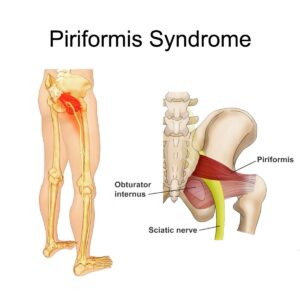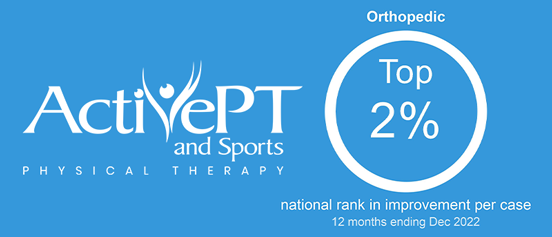We hear it all the time in our clinic, “running is causing this pain in my butt.” If the side of your glutes is achy and possibly sending pain down the back of your thigh, you may be suffering from Piriformis Syndrome. This sciatica-like pain is a frustrating issue that often plagues runners. Learning more about piriformis pain and how to adjust your running plan accordingly will help you achieve your running goals!
DO I HAVE PIRIFORMIS SYNDROME OR SCIATICA?
Piriformis syndrome is an irritation of the piriformis muscle. This muscle connects your hip to your pelvis in a strap-like fashion across the buttock and is responsible for rotating your hip outward. Buttock pain from piriformis syndrome may or may not bother you while running, but can make sitting afterward very uncomfortable. Often, walking uphill or climbing stairs will aggravate your buttock pain as well. In some cases, the pain will refer down the back of your leg because of the proximity of your piriformis muscle to the sciatic nerve. In this case, your problem is in your buttock, not your back.
DON’T IGNORE YOUR PAIN
If you are a runner suffering from buttock pain, don’t ignore it! We treat runners with piriformis pain frequently in our clinic. Anyone from track or cross country athletes to half or full marathoners can struggle with this frustrating syndrome. Often runners have been suffering from pain for months before seeking help. It’s not until their training program intensity peaks that runners seek out help. Unfortunately, treating the pain becomes harder the longer it’s been around. Early action makes piriformis pain easier to resolve and improves your odds of achieving your personal best on race day.

image credit Spine & Pain Clinics of North America
STRENGTHENING AND STABILIZATION IS CRITICAL
As runners, we spend most of our time with only one foot on the ground. The piriformis muscle acts as a key stabilizer of your hip joint. This means that every time you pick up one foot to take another stride, your piriformis muscle should activate and help stabilize your hip, knee, and foot as you push forward. Unfortunately, cross-training programs for runners often neglect to focus on hip stabilization.
Having a base of good strength is important, so be sure to include exercises that strengthen your gluteal muscles. Three muscles make up your gluts: gluteus maximus, gluteus medius, and gluteus minimus. The Gluteus maximus is the largest and strongest of the three. It acts as a power generator, propelling you forward each step. You can strengthen your glut max with hip thrusters, squats, and strict deadlifts. Gluteus medius and minimus, however, are responsible for stabilizing your hip. They keep you upright when you pick up your other foot to take another stride. Challenge these muscles by performing single-leg exercises like step-ups to a Bosu ball, single-leg deadlifts, and single-leg bridges. Focus on controlling your knee position and do not let your knee wobble inward or outward. As your ability to stabilize with your glutes improves, progress to single-leg squats, again focusing on controlling your knee position with your glutes.
Now that your hip stabilization is improving, challenge yourself to a mind game while running. For 30 seconds every mile, focus on controlling your weight-bearing leg while running. Activate your buttock muscles when your foot hits the ground and keep your knee pointed straight at your toes. These “stabilization intervals” help improve your running form and reduce the amount of side-to-side knee motion that contributes to piriformis syndrome in runners.
SHOULD I STOP RUNNING IF I HAVE PAIN IN MY BUTT?
Most runners suffering from piriformis syndrome can safely keep running. However, making modifications to your training and cross-training programs can help improve your odds of a successful race day.
- Reduce or eliminate hill and speed work until the pain settles down
- Limit back-to-back running days
- Focus on good quality tempo and long runs for half or full marathon training
- Consider adjusting your training program if it calls for a progressive increase in mileage every week
- Alternate more challenging mileage weeks with lower mileage weeks
- Prioritize nutrition and rest to optimize healing
Check out our swipe videos for more self-help tips and how to use a La Crosse ball to reduce your buttock pain.
If you are a runner and your buttock pain is not improving or if the pain goes down your leg, have your symptoms checked by a physical therapist who specializes in treating runners. Learning the cause early can help set you up for a successful race day. Our running team at ActivePT focuses on keeping runners running and can help answer your questions with a free 15-minute screening appointment today. Check out our running performance packages and reach your peak performance this race season or our running injury treatment page for more information on how we keep runners running while they heal.




